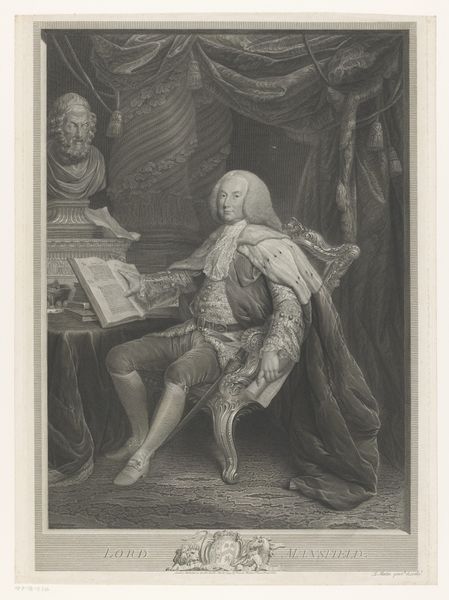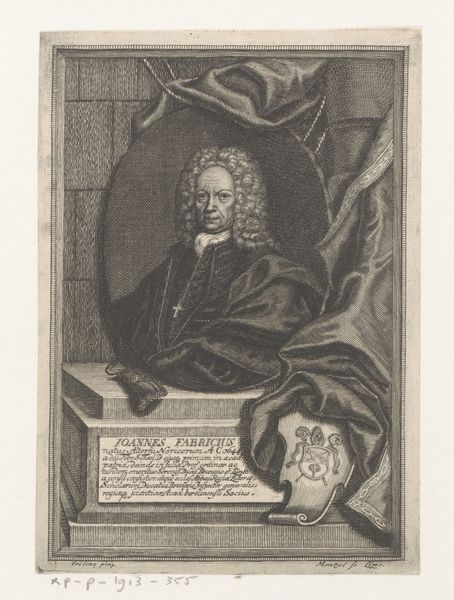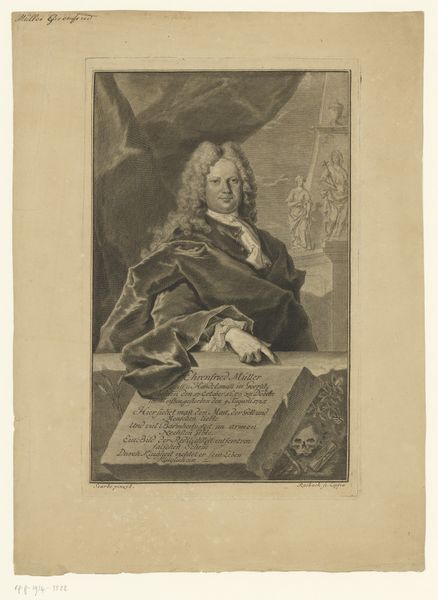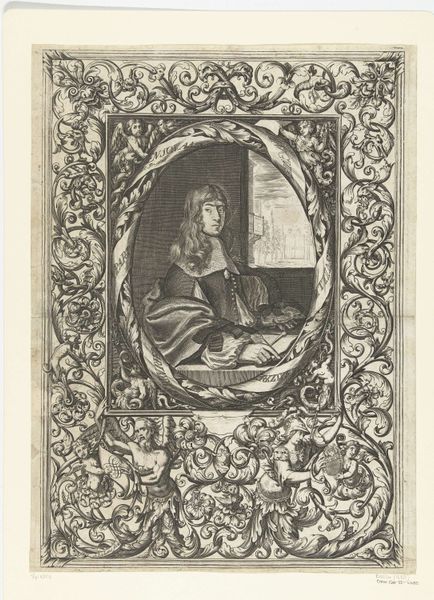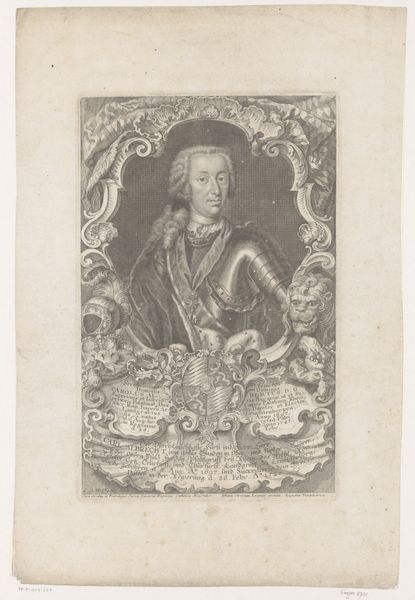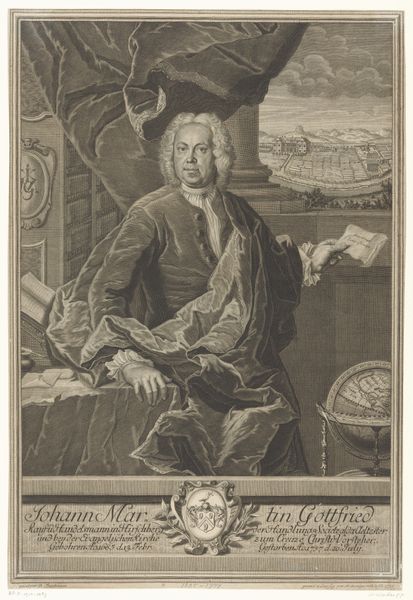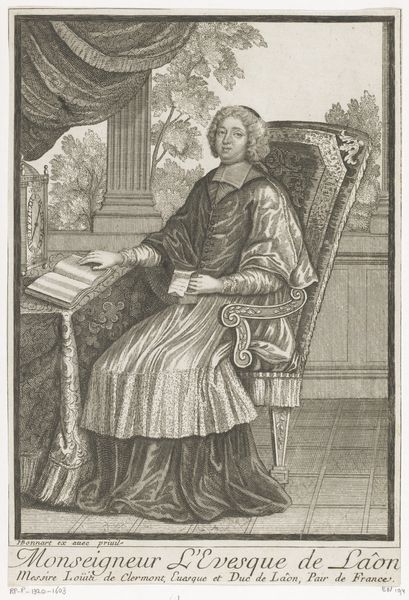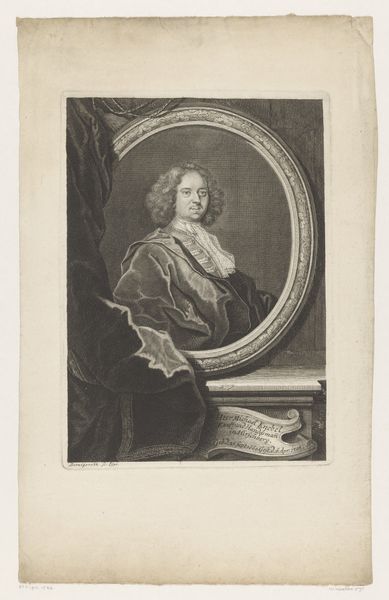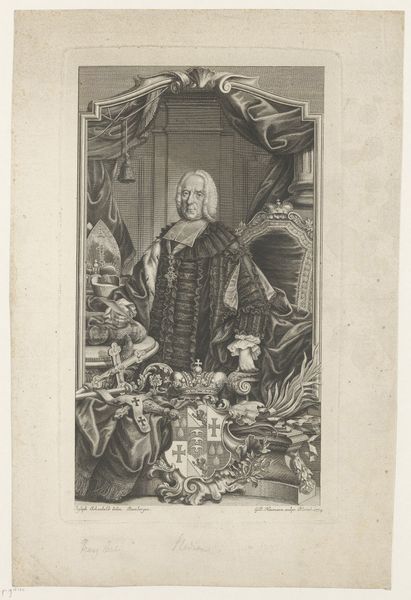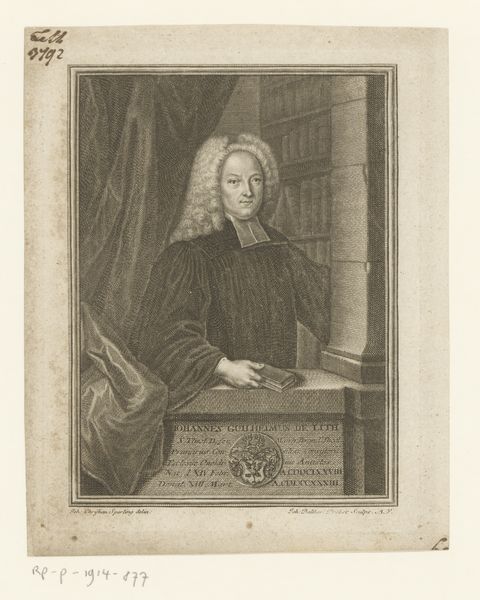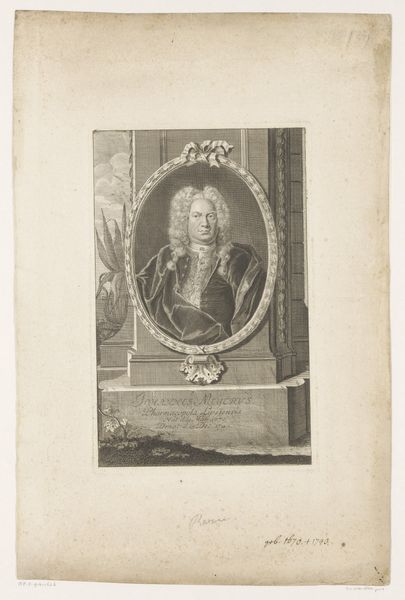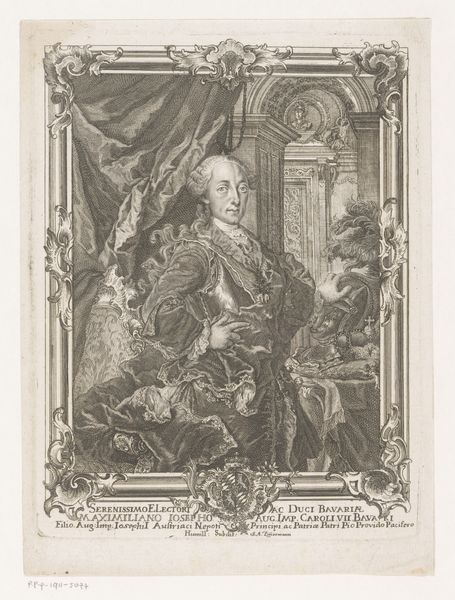
print, engraving
#
portrait
#
baroque
# print
#
history-painting
#
academic-art
#
engraving
Dimensions: height 285 mm, width 179 mm
Copyright: Rijks Museum: Open Domain
Jacob Andreas Fridrich created this portrait of Johann Sigmund von Zeller using etching and engraving techniques. Portraits such as this one reflect the sitter’s position in society, capturing both identity and status. In the 17th and 18th centuries, portraits were tools of social mobility and power, particularly for men. Von Zeller’s attire, his writing instruments, and the crucifix visible in the background all tell us something about him. His clothing implies a certain level of wealth and social standing. The crucifix suggests his deep connection to the church. This portrait is not just a representation of an individual. It's a reflection of the societal values and structures of the time. How does Fridrich's work invite us to reflect on the stories and identities that are made visible, or conversely, obscured? What does this portrait tell us about the negotiation of identity, status, and belief in the 18th century?
Comments
No comments
Be the first to comment and join the conversation on the ultimate creative platform.


